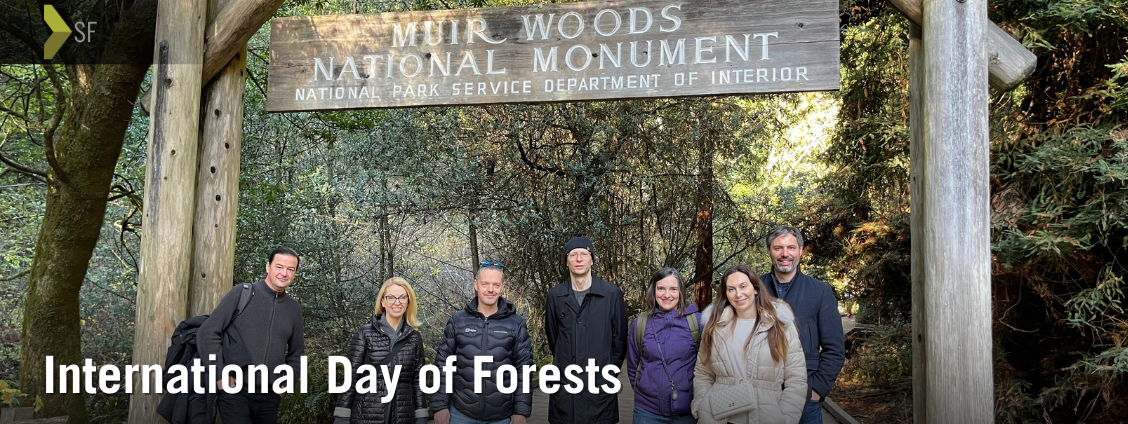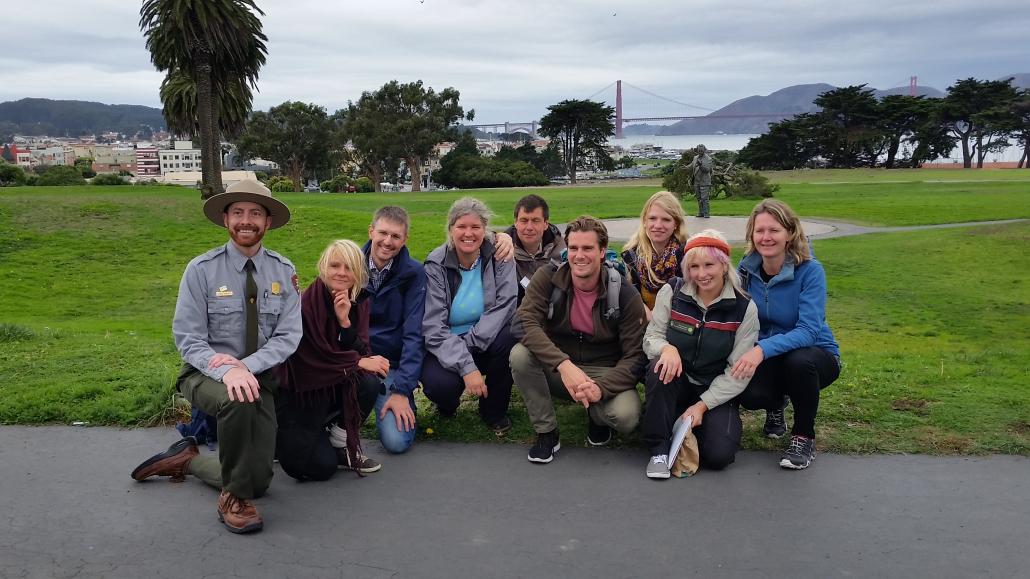
The United Nations International Day of Forests is recognized on the 21st of March to raise awareness of the importance of all types of forests. The 2025 theme, Forests and Foods, highlights the vital role of forests in food security, nutrition, and livelihoods. Beyond providing sustenance and income, forests support ecosystems, protect water and soil, and offer habitats for biodiversity, among other benefits.
Here in the San Francisco Bay Area, Muir Woods National Monument — proclaimed a National Monument in 1908 to protect and preserve the land — is one of the last remaining forested areas of coast Redwood trees. These giant evergreens can stand up to 79 meters tall and average between 600 and 800 years old, with the oldest being at least 1,200 years old. The park is home to 380 different plants and animals, ranging from bats that find refuge in tree cavities to Coho salmon and steelhead trout that swim in the clear waters of Redwood Creek.
Known for its towering stand of old-growth coast Redwood trees, Muir Woods attracts visitors from all over the world to experience this unique breathtaking ecosystem. Beyond its natural beauty, Muir Woods is also a site of profound historical significance, where nature, diplomacy, and the pursuit of peace intersect.
Did you know San Francisco is the birthplace of the United Nations, and Muir Woods played a symbolic role in its founding?
During a pivotal time in history, as World War II neared its end, world leaders convened in San Francisco for the United Nations Conference on International Organization (UNCIO) from April 25 to June 26, 1945, to draft and sign the UN Charter. Relatively equidistant between Asia, Europe, and Latin America, picturesque San Francisco was well positioned for a global gathering.
As preparations for the San Francisco Conference were underway, it was proposed that the delegates visit the serenity of Muir Woods to reflect in “a ‘temple of peace’ [where] the delegates would gain a perspective and sense of time that could be obtained nowhere in America better than in a forest.” U.S. Secretary of the Interior Harold Ickes described Muir Woods as a natural cathedral, where trees older than the Magna Carta stood as enduring witnesses to history.
When U.S. President Franklin Delano Roosevelt — who had championed the creation of a new international system to maintain peace — passed away two weeks before the conference began, the retreat to Muir Woods took on additional significance.
In tribute to his legacy, over 500 delegates from 46 nations gathered in Muir Woods Cathedral Grove on May 19, 1945, to honor the late president and reaffirm their commitment to building a more peaceful world. This commemoration cemented Muir Woods’ place in global history, making it not only a site of natural wonder but also a symbol of international cooperation, diplomacy, and the enduring pursuit of peace.
Today, as we celebrate the UN International Day of Forests, we are reminded that forests are even more than ecological treasures — they are also places of inspiration and unity, where people from different nations come together, as they did in 1945, to contemplate a shared future.
Through our work with the U.S. Department of State’s International Visitor Leadership Program (IVLP) and other custom exchanges, Global Ties San Francisco continues this tradition by bringing international visitors to experience the majesty of Muir Woods. In doing so, we reinforce San Francisco’s role as a center for global engagement, fostering the same spirit of global exchange and mutual understanding that underlined the founding of the United Nations nearly 80 years ago.
#ForestDay
Author: Song Held
Editor: Alannah Crandall


